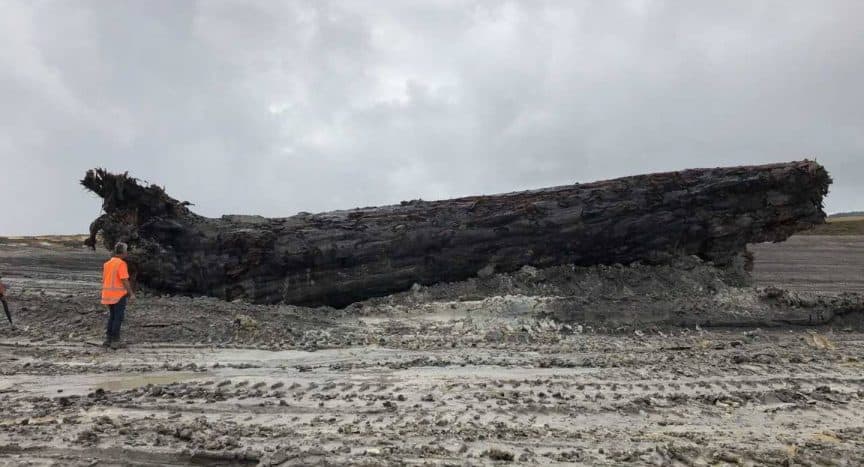Trees are living memorial statues, and we can learn a lot from their rings. A tree can tell you if the winter was wet or if the area was affected by hurricanes or fires.
One particular tree attracted the attention of everyone. It was found in Ngawha, on New Zealand’s North Island. According to experts, the tree had a record of a reversal of Earth’s magnetic field. It’s actually an Agathisaustralis, also known as “kauri.”

The tree was found during excavation work for the expansion of a geothermal power plant.
Ngāwhā Generation is a subsidiary of Top Energy. They gave the kauri tree back to iwi. Of course, they agreed to take samples and study the segments.
The tree was buried 26 deep into the soil. It has eight feet in diameter and 65 feet in length. According to its carbon dating, the tree lived for 1,500 years. The giant thrived between 41,000 and 42,500 years ago.
Alan Hogg, from New Zealand’s University of Waikato, notes that they have never seen anything like this. According to him, the Ngāwhā kauri is unique. The tree lived when the magnetic field almost reversed. The magnetic north and south went off but didn’t complete a full reversal.
Experts note that Earth’s magnetic field is generated by the iron in the core. It produces electric currents that go far into space. The field acts as a barrier that protects Earth from the solar wind. It’s actually a stream of charged particles from the Sun that may remove the ozone layer in case it affects the atmosphere.
When reversed, the magnetic field weakens and caused higher radiation from the Sun going through. Extinction events in the past are often linked to these magnetic field reversals.

The rings of this tree have a full record of a near-reversal. It’s the first tree that lived during the entire event and was eventually found.
Hogg said, “It’s the time it takes for this movement to occur that is the critical thing…We will map these changes much more accurately using the tree rings.”
The kauri tree revealed during the expansion of the Ngāwhā Generation geothermal power plant. Chris Turney from the University of New South Wales led the analysis of the tree. He is an expert in paleoclimatology and climate change. His research is funded by the Australia Research Council.
He said, “The precious thing is this huge, lonely tree grew for some 1700 years across a remarkable period in our planet’s history when the Earth’s magnetic field flipped some 42,000 years ago, a period known as the Laschamp Excursion. Funded by the Australian Research Council we’re undertaking detailed measurements of the radioactive form of carbon through the tree rings.”
Each process is completed in 7,000 years. Monika Korte, the scientific director of the Niemegk Geomagnetic Observatory at GFZ Potsdam in Germany explains that it’s a slow process in which the field strength weakens, and the field becomes more complex. It shows more than two poles for a while, and then becomes stronger and aligned in the opposite direction.
NASA explains that magnetic field reversals happen at random intervals. The reversals developed a pattern in the last 20 million years. One reversal happens once every 200,000 to 300,000 years. The last one took place around 780,000 years ago.

Scientists didn’t expect the magnetic north pole to move, but it did recently. They updated the World Magnetic Model which represents our planet’s magnetic field. The WMM is used by the U.S. Department of Defense, the U.K. Ministry of Defense and many civilian systems.
“Because the Earth’s magnetic field has a major effect on how much radiocarbon is formed in the upper atmosphere, these precious analyses will allow us to investigate the magnitude and rate of change when the magnetic field reversed during the Laschamp; something not possible before and of great interest given recent changes in the Earth’s magnetic field,” Turner explained.
Source: https://archaeology-world.com








